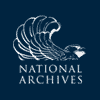Thomas Jefferson to James Dinsmore, 28 January 1804
To James Dinsmore
Washington Jan. 28. 04.
Dear Sir
I return you the drawings for the architrave of the front of the gallery, with a preference of that marked b. with the rounded listel. I do not approve of cutting the wall, not even the cellar wall, to make a space for the descent of the clock weights; but would have them advanced into the room so as to descend clear even of the cellar wall. should the box in this case encroach too much on the window, we may avoid the eye sore by leaving them unboxed, to descend naked till they get to the floor whence they may enter a square hole & go on to the cellar floor.
The loss of so much plank by fire & otherwise is one of the most afflicting circumstances I have had to meet in the whole course of my building: & the only term to it seems to be the conclusion of the work. to cover the kiln-house with slabs will be only to require double time & fuel to season with and probably to consign another kiln full to the flames.
 we must therefore purchase bricks somewhere, cost what they will, to cover the house with an arch as here represented. it will take about 1500. whole bricks, clinkers. the gable ends may be closed with stone, leaving in the Southern one a smoke hole as is shown in this drawing, so that stopping that and the firehole at the bottom of the other end, a fire may be extinguished in a moment for want of air, even if it has already made some progress. so the external1 covering of wood may burn down without affecting the plank. speak to mr Lilly to get the bricks, and to mr Hope to do the work as soon as the weather will admit, and in the mean time endeavor to2 make a new provision of plank. John Perry proposes to get the scantling for the N.W. offices this winter, which I should prefer if it can be secured from waste. I am afraid the flooring plank he was to lay upstairs is among that lost, and that we shall not have those rooms ready for the plaisterer. Accept my best wishes.
we must therefore purchase bricks somewhere, cost what they will, to cover the house with an arch as here represented. it will take about 1500. whole bricks, clinkers. the gable ends may be closed with stone, leaving in the Southern one a smoke hole as is shown in this drawing, so that stopping that and the firehole at the bottom of the other end, a fire may be extinguished in a moment for want of air, even if it has already made some progress. so the external1 covering of wood may burn down without affecting the plank. speak to mr Lilly to get the bricks, and to mr Hope to do the work as soon as the weather will admit, and in the mean time endeavor to2 make a new provision of plank. John Perry proposes to get the scantling for the N.W. offices this winter, which I should prefer if it can be secured from waste. I am afraid the flooring plank he was to lay upstairs is among that lost, and that we shall not have those rooms ready for the plaisterer. Accept my best wishes.
Th: Jefferson
RC (H. W. Lende, Jr., San Antonio, Texas, 1988); at foot of text: “Mr. Dinsmore.” Enclosures not found.
Dinsmore likely enclosed drawings for the architrave intended for Monticello’s entrance hall in a letter of 21 Jan., recorded in SJL as received 24 Jan. but not found. That letter also must have offered suggestions for the installation of the Great Clock in that room. Powered by two cannonball-like weights, which were strung on ropes and descended into the basement below and which also set off the hourly striking of a Chinese-inspired gong, the clock was completed according to TJ’s specifications in 1793 and installed in the renovated Monticello in 1804 or 1805. TJ purchased weights for it in July 1804 (Susan R. Stein, The Worlds of Thomas Jefferson at Monticello [New York, 1993], 376-7; , 2:1131).
Dinsmore had likely provided details on the burning of the plank house at Monticello, about which Anne Cary Randolph also reported in her letter of 21 Jan. clinkers are bricks whose surface has become vitrified through exposure to intense heat ().
A letter of 19 Jan. from john perry, recorded in SJL as received 24 Jan., has not been found.
1. Word interlined.
2. TJ here canceled “provide.”

![University of Virginia Press [link will open in a new window] University of Virginia Press](/lib/media/rotunda-white-on-blue.png)
